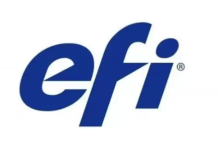Viewing distance and scaling factor are some of the notions incorporated in the Ghent Workgroup’s (GWG) innovative specification to address the diverse sign and display segment. This allows having one specification, but still to address the big differences in printing techniques within typical sign and display jobs.
‘We started working on the new Sign & Display specification quite a while ago,’ said David van Driessche, Executive Director of the GWG and Chief Technology Officer at Four Pees. ‘Because this new specification has to cover a very broad market, and as a result is more challenging for preflight vendors to address, we even released a public beta version 6 months ago. We now believe the specification is ready for prime time.’
‘After the release of the public beta we already started implementing the Sign & Display specification with a first customer,’ commented Peter Kleinheider, CEO and CTO of calibrate workflow consulting GmbH and Co-chair of the Specification Subcommittee that developed the new specification. ‘Having support for wide gamut colours and the concept of scaling factor made its implementation in this web shop completely straightforward.’ This new specification will make the delivery of PDF files for sign and display much easier and bring much-needed standardisation to the market segment.
Viewing distance and scaling factor
Viewing distance is the average distance between the final printed work and a typical viewer. This can be as little as 1 metre (3 feet) for banners, or as much as 75 metres (250 feet) for highway billboards. This concept is used because typically, the bigger the viewing distance, the lower the image resolution can be.
Scaling factor is another widely used concept in the large format print market. Because files can become very large, and typical editor applications are not always up to the task to handle these larger size files, many designers create their PDF file at half, 1/10th or even 1/48th of the final printed size. The rules in the Ghent Workgroup specification of course have to take this into account as well.
Wide gamut
The other factor that sets apart this new specification from earlier Ghent Workgroup specifications, is that it opens up which colour spaces can be used in a PDF file. This is important because of the number of wide-gamut output devices in use in this market. For the first time, a GWG specification allows the use of colour spaces such as calibrated RGB or L*a*b* for all elements within a PDF document. The specification and application settings built from it are available from the Ghent Workgroup web site. As everything else created by the workgroup, they are available for free.
Read the top 5 stories weekly on WhatsApp or sign up to our newsletter.
GHENT WORKGROUP https://www.gwg.org















